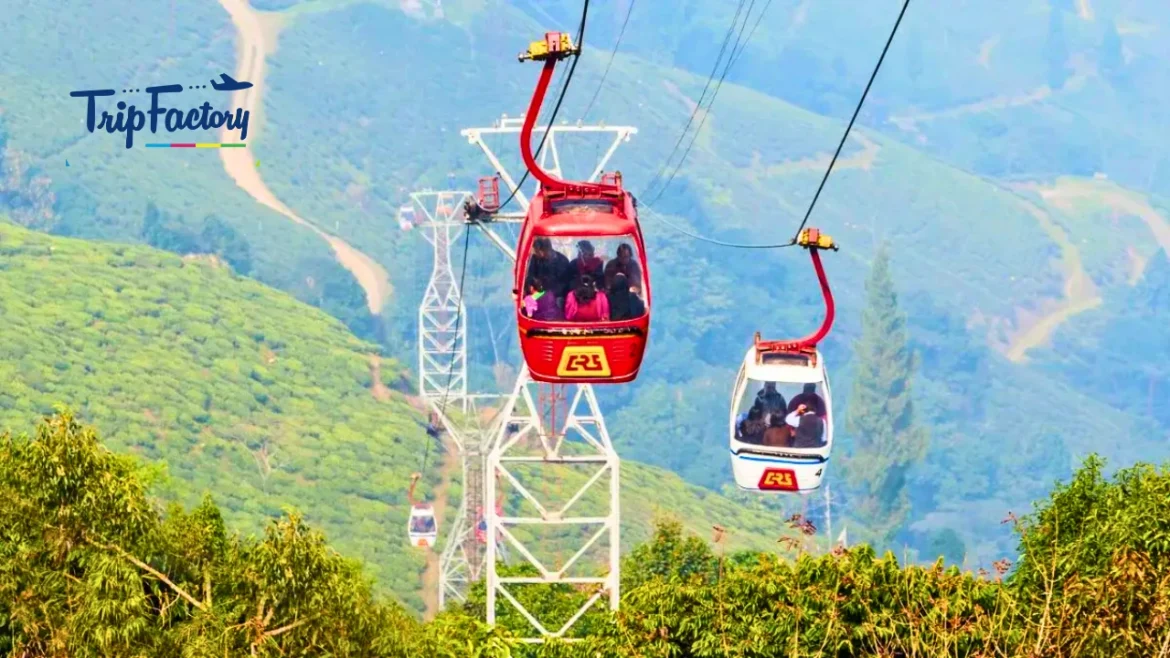Here are 10 key points about the Shimla ropeway project:
- India’s Longest Ropeway: The project will create India’s longest ropeway and the world’s second-longest.
- Project Length: The ropeway will span 13.79 kilometres across Shimla.
- Passenger Capacity: It will carry up to 6,000 passengers per hour with 660 trolleys.
- Number of Stations: The ropeway will have 13 stations located throughout Shimla.
- Cost Estimate: The total cost of the project is estimated to be Rs 1,734 crore.
- Funding: The New Development Bank (NDB) has approved funding for the project.
- Construction Timeline: The project will be completed in two phases, with the first phase expected to take around three years.
- Alleviate Traffic: The ropeway aims to reduce Shimla’s traffic congestion.
- Station Locations: Key stations include Tara Devi, Railway Station, Sanjauli, and Lakkar Bazaar, among others.
- Affordable Fares: The fare structure will align with Shimla’s current bus fares, making it affordable for commuters.
Shimla to Get India’s Longest and World’s Second-Longest Ropeway with Funding from NDB
Shimla, the capital of Himachal Pradesh and known as the “Queen of Hills,” is set to receive India’s longest and the world’s second-longest ropeway. The project aims to alleviate traffic congestion in the city and improve transportation. The construction of the 13.79-kilometre-long ropeway will feature 660 trolleys, 13 stations, and three lines, allowing it to carry up to 6,000 passengers per hour. The project is estimated to cost around Rs 1,734 crore.
The New Development Bank (NDB) has approved the funding for the ropeway project and has already authorized the advance purchase of materials, which will allow preparations to begin ahead of the formal tendering process. Work on the project is expected to begin in March 2025.
Also Read: IndiGo Takes Off with First-Ever Business Class and Stretch Seating
Once completed, the Shimla ropeway will significantly reduce the city’s traffic jams and become a major infrastructure development for the region. The ropeway system will be equipped with 660 trolleys and will operate through 13 stations, with the ability to transport thousands of passengers quickly and efficiently.
Project Overview and Funding
The NDB’s approval of the funding marks a major milestone in the development of the Shimla ropeway. As the project moves forward, overseas consultants have been hired for the design and planning phases, and Rs 20 crore has been allocated for environmental clearance.
The ropeway will be built in two phases, with the first phase expected to be completed in about three years. The project will span several key locations across Shimla, with stations at Tara Devi, Judicial Complex, Chakkar, Tutikandi, New ISBT, Railway Station, Old ISBT, Lift, Chota Shimla, Navbahar, Sanjauli, IGMC, Lakkar Bazaar, and the 103 Tunnel. The ropeway will feature three separate lines to serve these stations efficiently.
Global Context
Once completed, Shimla’s ropeway will become one of the longest in the world. Currently, the world’s longest ropeway is located in Bolivia, South America, spanning 32 kilometres. There are approximately 25,000 ropeways in use globally, with India currently operating only 20.
With its 660 trolleys, the Shimla ropeway will offer an efficient and eco-friendly alternative to road transport. The fare system will be aligned with Shimla’s current bus fares, ensuring affordability for local commuters. The project is poised to transform the city’s transport infrastructure and become a major tourist attraction.
Also Read: Indian Tourist Arrivals in Singapore Hit 1 Million in October
Check Latest Stories:





